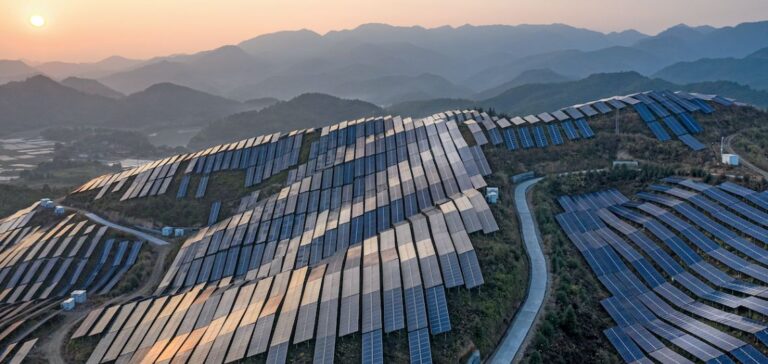Global renewable energy production capacity reached 4,448 gigawatts (GW) at the end of 2024, marking an annual increase of 585 GW, according to data published by the International Renewable Energy Agency (IRENA). This growth accounted for 92.5% of all newly installed electrical capacity worldwide and represents an unprecedented annual growth rate of 15.1%.
Geographical concentration of expansion
Asia absorbed the majority of investments, with China leading. It contributed 64% of the added capacity in 2024, reinforcing its position in the solar and wind segments. In contrast, regions such as Central America and the Caribbean accounted for only 3.2% of global additions. G20 countries represented more than 90% of new capacity, underscoring persistent disparities in the deployment of energy infrastructure.
Dominance of solar energy
Solar energy represented more than three-quarters of new installations, with an annual increase of 451.9 GW. China alone contributed 278 GW. India was also among the top contributors with an additional 24.5 GW. Wind energy grew by 11.1%, reaching a total capacity of 1,133 GW, driven largely by China and the United States.
Limited source diversification
Hydropower energy, excluding pumped storage systems, rebounded to 1,283 GW, supported by new projects in Ethiopia, Pakistan, Nepal and Vietnam. Biomass energy rose by 4.6 GW, compared to 3.0 GW in 2023, with significant contributions from France and China. Geothermal energy grew by 0.4 GW, with capacity expansions in New Zealand and Türkiye.
Gap with international targets
Despite this growth, a significant gap remains to reach the 11.2 terawatts required by 2030 under global commitments. Annual growth now needs to exceed 16.6% to align national trajectories with targets set at climate summits. IRENA has called for a revision of the Nationally Determined Contributions (NDC 3.0) to include more structured capacity goals.
IRENA Director-General Francesco La Camera stressed the need to integrate these ambitions into national energy policies, highlighting the risks linked to geographical concentration and structural imbalances across markets. The Agency has continued working with member states to adapt national energy roadmaps within the NDC framework.






















